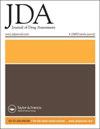Medication adherence and graft survival among kidney transplant recipients
IF 2.4
引用次数: 1
Abstract
Abstract Background: Though medication adherence is essential for graft survival, non-adherence to immunosuppressants post kidney transplant is common (30–35%), potentially leading to poor quality of life and increased healthcare costs. Aims: The objective of this study was to examine the association between graft survival and adherence in kidney transplant recipients. Methods: This retrospective, observational cohort study used claims data from a single, large national pharmacy chain and post-transplant follow-up data from the OPTN Network database. The sample included adult deceased donor kidney transplant recipients (most recent transplant if more than one) who had: >2 pharmacy claims for any immunosuppressant >150 days apart in the 12 months after their first fill in the study period (2013–2016). Proportion of days covered (PDC) by any immunosuppressant for 12 months after first fill was calculated as a measure of adherence (defined as PDC >80%). Graft survival was defined as having a surviving graft at the end of the study period. Logistic regression was used to estimate the association between adherence and graft survival controlling for covariates (age at transplant, time since transplant, gender, race/ethnicity, copay, number of prescriptions for chronic conditions, pharmacy insurance plan, brand medication usage, digital fills, filling at a transplant specialized pharmacy, receiving financial assistance, the interaction between brand medication usage and receiving financial assistance, and the interaction between age and adherence). Results: Of the 14,703 kidney transplant recipients eligible for the study, 73% were adherent and 85% had a surviving graft (1 to 9780 post-transplant). After adjusting for covariates, the odds of having a surviving graft were higher for adherent patients than for non-adherent patients (OR = 2.75, [1.95, 3.87]; p < .001). Other notable factors associated with graft survival included having no post-index prescriptions for chronic conditions (OR = 3.48, [2.95, 4.11]; p < .001) and commercial insurance (vs. Medicare Part B) (OR = 1.35, [1.16, 1.56]; p < .001). Conclusions: This analysis suggests adherent patients were more likely to have a surviving graft than those who were not adherent to immunosuppressants. As medication adherence behaviors may vary across patient populations, future studies should aim to show which patient behaviors contribute to medication adherence.肾移植受者的药物依从性和移植物存活率
背景:尽管药物依从性对移植肾存活至关重要,但肾移植后不坚持使用免疫抑制剂是常见的(30-35%),这可能导致生活质量下降和医疗费用增加。目的:本研究的目的是检查肾移植受者移植存活与依从性之间的关系。方法:这项回顾性、观察性队列研究使用来自单一大型国家连锁药店的索赔数据和来自OPTN网络数据库的移植后随访数据。样本包括成年已故供体肾移植受者(最近一次移植,如果不止一次),他们在研究期间(2013-2016年)第一次填写后的12个月内,间隔150天有:bbbb2次对任何免疫抑制剂>的药房索赔。计算首次填充后12个月内任何免疫抑制剂覆盖天数(PDC)的比例,作为依从性的衡量标准(定义为PDC >80%)。移植物存活被定义为在研究期结束时有一个存活的移植物。使用Logistic回归来估计依从性与移植物存活之间的关联,控制协变量(移植年龄、移植时间、性别、种族/民族、共付额、慢性病处方数量、药房保险计划、品牌药物使用、数字填充、在移植专业药房填充、接受财政援助、品牌药物使用与接受财政援助之间的相互作用)。年龄和依从性之间的相互作用)。结果:在14703名符合研究条件的肾移植受者中,73%的人粘附,85%的人移植后存活(移植后1 - 9780例)。在调整协变量后,粘附患者的移植物存活几率高于非粘附患者(OR = 2.75, [1.95, 3.87];p < 0.001)。其他与移植物存活相关的显著因素包括:没有慢性疾病的指数后处方(OR = 3.48, [2.95, 4.11];p < 0.001)和商业保险(与联邦医疗保险B部分相比)(OR = 1.35, [1.16, 1.56];p < 0.001)。结论:该分析表明,黏附患者比未黏附免疫抑制剂的患者更有可能存活移植物。由于药物依从性行为可能因患者群体而异,未来的研究应旨在表明哪些患者行为有助于药物依从性。
本文章由计算机程序翻译,如有差异,请以英文原文为准。
求助全文
约1分钟内获得全文
求助全文

 求助内容:
求助内容: 应助结果提醒方式:
应助结果提醒方式:


